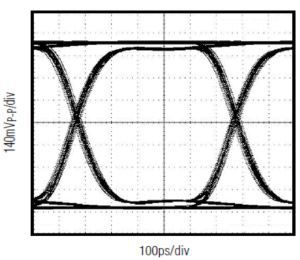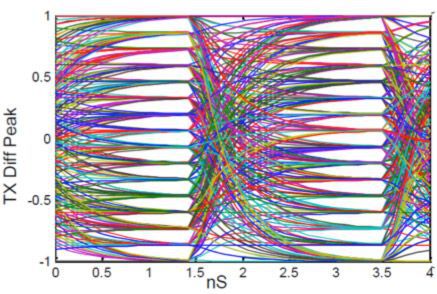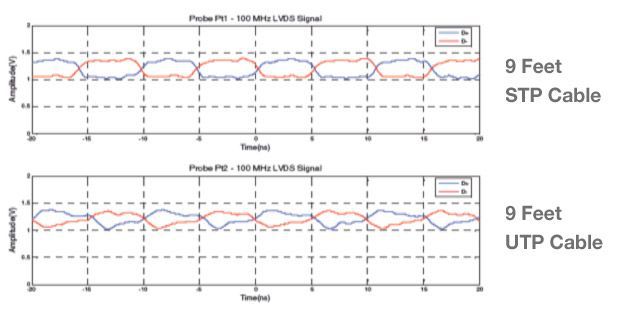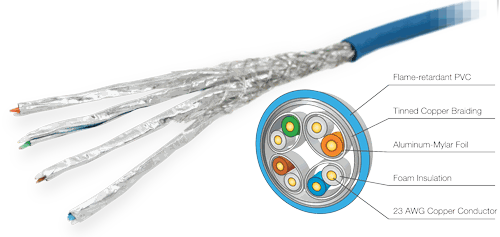-
Products
+
-
Products
- New Products
- AV over IP Solutions
- Unified Communication & Collaboration Solutions
- Digital Video Processing Solutions
- Control Systems & Software
- Matrix Switchers
- HDMI Switchers
- HDMI Distribution Amplifiers
- Wireless AV Solutions
- HDMI over CAT6 Extenders
- HDMI Fixers & Boosters
- HDMI Cables
- Active Optical HDMI Fiber Cables
- Audio Solutions
- Accessories
-
Key Digital AV Over IP Systems
- AV Over IP Systems Overview
- AV Over IP Products
- DIY AV Over IP Systems
- Control Apps and Software
-
-
Markets & Solutions
+
- KD University
-
Resources
+
-
Press Resources
- Press Releases
- Key Digital in the News
- Hires Artwork
-
Sales Resources
- Market Case Studies
- Video Resources
- Sales & Tech Presentations
-
- About Us +
- Contact +
How do we choose twisted pair cable?
By Mike Tsinberg - July 2014
In current environment with so many cable types available it is sometimes difficult and confusing for the installer to decide appropriate twisted pair cable among types such as CAT5e, CAT6, UTP, STP and etc..
In custom installation market we deal with basically five different types of twisted pair use:
- Extending HDMI by using TMDS technology in two cables systems
- Extending HDMI by using single cable HDbaseT technology
- Extending VGA/YPrPb – analog systems
- IP Network
- Other uses such as Audio, Security etc.
In this paper we will discuss extending HDMI by using HDbaseT or TMDS methods.
TMDS type extenders:
TMDS is basically a binary one dimensional modulation method where ideally "1" has a value of +0.5V and "0" has a value of -0.5V. To send more "1"'s and "0"'s in the same time frame the TMDS has to use faster clock and therefore allocate less time for each "1" and "0" – Picture1. Extending HDMI with TMDS is an older technology that uses existing HDMI cable signaling by means of two cables. One cable is dedicated to TMDS (Video and Audio) and another carries all the necessary additional HDMI data such as DDC (EDID, HDCP), CEC, Hot Plug (HP) and etc. TMDS is a one directional, high speed data that can reach 10 Gb/s for various resolutions and formats, and DDC, CEC and HP is much slower bi-directional data well below 1 Mb/s. If TMDS portion of the cable does not provide sufficient bandwidth - the resolution and color depth accuracy will be limited. The HDMI cable itself uses CAT6STP-like cable inside with individually shielded twisted pairs. The length range of the HDMI cables is usually extending no more than 70 feet. Cables between 40 and 70 feet in length usually require active EQ (Equalizer) circuit on the Rx end of the cable to recover distorted by cable TMDS signal.
TMDS TX Eye Pattern

Picture 1.
HDBaseT type extenders:
HDbaseT is a brand new technology that does not use TMDS modulation. HDbaseT similarly to 10GbaseT is using much more advanced PAM16 modulation. PAM16 is a two dimensional method where bits are modulated both in amplitude and time. PAM16 allows to have16 distinct eye patterns stocked up in amplitude (vertically) for one clock cycle, Picture 2. When you deploy HDbaseT extender or switcher/distribution amp with embedded HDbaseT two conversions take place: HDMI signal package TMDS, DDC, CEC and Hot Plug converted to PAM16 on the Tx end and then back to complete HDMI on the Rx end. Using lower clock speeds PAM16 allows sending considerably more data through the same cable then in TMDS case and achieves considerably greater distances as well. All of this is possible by slower clock speeds of PAM16 compare to TMDS method.
PAM16 TX Eye Pattern

Picture 2.
Considering these two existing methods for extending HDMI by using twisted pair cables, let's address our main question: How do we select best cable for the job?
- CAT6 is always better than CAT5e. CAT6 uses larger diameter wires and therefore archives higher bandwidth sometimes exceeding 500 MHz. Higher bandwidth will prevent corruption of TMDS or PAM16 eye patterns at longer distances. Both types of extenders will allow sending same resolution for longer distances or to increase resolution and/or number of bits per color. The 4Kx2K/24 resolution also requires about double amount of bandwidth compare to 1080p/60 resolution.
- STP (Shielded Twisted Pair) is always better than UTP (Unshielded Twisted Pair). STP blocks interference from the outside of cable. Twisted pair is a differential method of sending signals that theoretically protects from outside interference. However, at very high data speeds that differential protection is not perfect and high frequency energetic RF signals can create data errors. Such interference creates image "sparkling" where image pixels have wrong data value. Additional benefit of STP is unification of the ground between Tx and Rx sides. For long cable runs ground can be substantially different and floating between Rx and Tx side. The ground differentiation and floating could be of such a value that it may not always be ignored by differential signal circuit at the Rx end. Soldering STP cable shield to ground on each Tx and Rx end creates single ground plane that removes this problem. Picture 3 shows comparison of generic UTP and STP performance on a short 9 feet cable. Even at this length and low frequency the UTP shows more degradation to the signal.

-
Picture 3.
- Shielded individual pair cable is better than not shielded in the STP cable. These individual shields block interference from inside the cable. The inside twisted pair to twisted pair interference sometimes can be more of a problem then outside interference because of the data frequencies used in both TMDS and PAM16 signaling. Additional benefit if individual shielding is father lowering of ground impedance between Tx and Rx.
Below is an example of CAT6/STP cable that incorporates all 3 of above concerns into one package:
KD-CAT6STP100 - High Performance CAT6/STP Cabling


Key Features:
- Designed for 1000Base-TX, 100Base-TX; 10Base-T and HDBaseT® applications
- Features 4 individually aluminum-foil screened twisted pairs
- Overall braid-shielded to an S/FTP form
- Frequency Range: 1 to 1.4 Ghz
- Conductor Size: 23 Awg Bare Copper
- Internal Shield Material: Aluminum-Mylar Tape
- Overall Shield Material: Tinned-Copper
- Braid Conductor Color Code: Standard
- Total Wires: 8
Key Features:
- Designed for 1000Base-TX, 100Base-TX; 10Base-T and HDBaseT® applications
- Features 4 individually aluminum-foil screened twisted pairs
- Overall braid-shielded to an S/FTP form
- Frequency Range: 1 to 1.4 Ghz
- Conductor Size: 23 Awg Bare Copper
- Internal Shield Material: Aluminum-Mylar Tape
- Overall Shield Material: Tinned-Copper
- Braid Conductor Color Code: Standard
- Total Wires: 8
This cable demonstrated remarkable performance improvements compared to regular CAT5e and CAT6 cables shown in the Table 1 below. Various cables were tested for TMDS, HDBaseT "Lite" and HDBaseT "Full" methods:
KD-CATHD100 / KD-CATHD150







